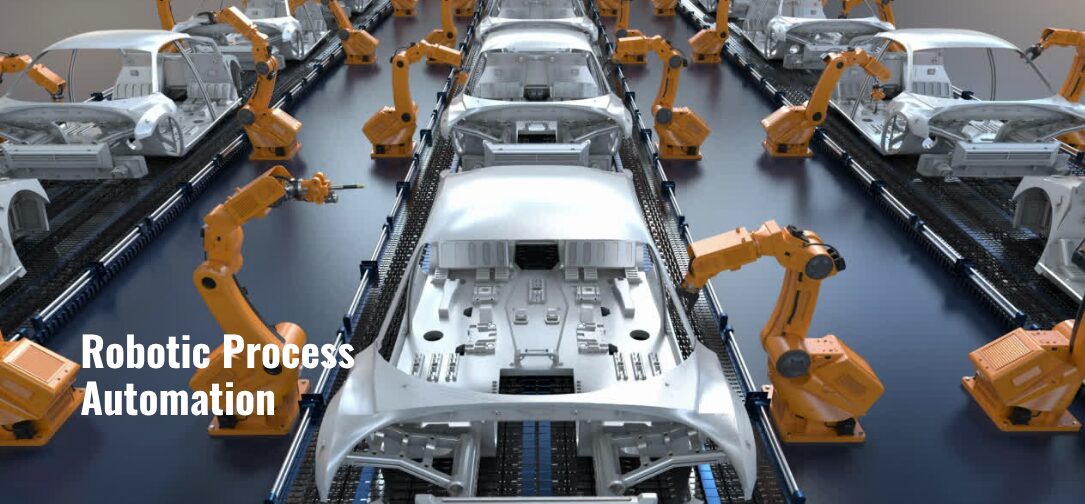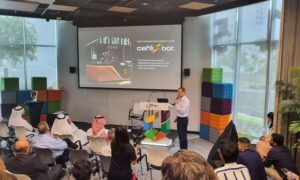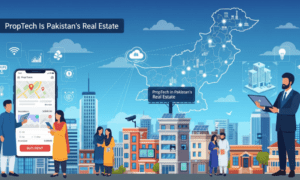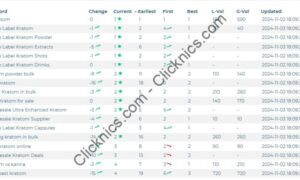Robotic Process Automation (RPA) has transformed significantly over the past few decades – from simple screen-scraping scripts in the 1990s to today’s AI-driven autonomous agents. Ivan Tertychnyy, Product Manager at TraceAir and founder of the agentic automation platform Sopos provides a historical overview of RPA’s evolution and offers a forward-looking action plan for operations executives.
Early Rule-Based RPA (1990s–2009)
In the early days, process automation was largely ad hoc and UI-centric. Tech-savvy employees used built-in macro recorders in applications like Excel and Word to automate repetitive tasks. These early scripts improved efficiency for individual “power users,” but they rarely scaled beyond a single desktop. Meanwhile, QA and testing teams experimented with screen scraping tools – essentially recording mouse clicks and keystrokes to replay interactions on a screen. This was a leap forward in simulating human-like interaction, yet such automations were notoriously brittle. A minor change to an application’s interface could break the script, meaning early bots required constant maintenance. These limitations kept automation confined to IT experts and prevented broader enterprise adoption.
During this period, financial services and BPO (business process outsourcing) firms were among the first to see the potential of automation. They dealt with large volumes of data entry and record-keeping, so even crude screen-scraping scripts delivered value. Banks and insurance companies embraced these tools to boost efficiency, but implementing them wasn’t easy. Setting up automation often meant building complex IT environments and writing custom code – an effort only firms with significant IT resources could afford. In other words, the entry barrier was high: automation required expensive engineering skills and time-consuming integrations in the 2000s.
A major turning point came in the early 2000s with the contributions of Blue Prism. Founded in 2001, Blue Prism launched one of the first true RPA platforms in 2003. Their vision was an “outsourced digital workforce” – software bots that could mimic a human worker’s actions in back-office processes. Blue Prism deliberately avoided the fragile macro-recorder approach; instead, they provided a more resilient, object-based automation framework (using Microsoft .NET) and a centralized control room to deploy and schedule bots. This pioneering approach introduced the idea that bots should be managed like a workforce with proper controls. However, early RPA bots were still rules-based and deterministic. They could reliably execute predefined steps (e.g. copy data from System A to System B), but lacked any ability to adapt or handle exceptions beyond what they were explicitly programmed for.
Enterprise RPA Boom (2010–2017)
The 2010s saw RPA break into the enterprise mainstream. Pioneers like Blue Prism were soon joined by UiPath and Automation Anywhere – forming the “Big Three” of enterprise RPA software. These vendors rapidly expanded RPA’s capabilities and user base. Crucially, they added enterprise features such as centralized bot orchestration, credential vaults for security, and analytics dashboards, making it feasible to deploy dozens or hundreds of bots with proper governance. By the mid-2010s, organizations in finance, insurance, healthcare, and beyond were implementing RPA to automate processes like invoice handling, employee onboarding, claims processing, and other high-volume routines. Many reported impressive early ROI on these targeted use cases – often seeing positive returns within months as bots worked 24/7 without errors, freeing employees from drudge work. For example, a Blue Prism customer in banking achieved >650,000 hours of manual work eliminated in one year, translating to millions in savings. Such success stories fueled a boom in RPA adoption across industries.
Equally important during 2010–2017 was the push for “citizen developers” in RPA. Vendors touted that business users (in finance, HR, etc.) could build their own simple automations via low-code, drag-and-drop studios. This democratization of development promised to scale automation faster than if only IT developers built bots. Some companies indeed empowered non-engineers to create bots for their team’s needs. However, with great power came great responsibility: without guardrails, a “citizen developer” approach can devolve into the Wild West. Leading organizations found that a hybrid model worked best – encouraging citizen-led development under the watchful eye of IT. Many firms established RPA Centers of Excellence (CoEs) to govern standards, security, and maintenance of all bots. In practice, a business analyst might build a bot to automate a report, but the CoE would review the bot’s code, ensure it met compliance rules, and then move it into production. This IT-governed expansion let companies harness grassroots innovation without compromising on quality or control. By 2017, the playbook for successful RPA programs often included robust governance structures, training programs to upskill employees in automation, and frameworks to evaluate which projects were suitable for citizen developers versus professional developers.
Intelligent & Democratized Automation (2017–2024)
Around 2017, RPA entered a new phase often dubbed Intelligent Automation or “Hyperautomation.” Having proven that software bots can reliably handle rote, rules-based tasks, the focus shifted to expanding their capabilities. This period saw RPA platforms embed technologies like optical character recognition (OCR), natural language processing (NLP), and machine learning. The goal: enable bots to tackle unstructured or more complex work that previously needed human judgment. Industry analysts described this as the “fourth wave” of RPA – integrating intelligent components such as OCR, machine learning and chatbots into RPA applications. For example, instead of a bot only working with neatly formatted data, now an RPA workflow could include an OCR step to read invoices or PDFs, an NLP step to interpret an email request, or an ML model to classify an order. These additions blurred the line between plain automation and AI-driven processes, hence the term hyperautomation (popularized by Gartner) to denote the fusion of RPA with AI and analytics.
In practical terms, this made RPA solutions far more powerful. A bot could receive an email in natural language, extract key details with NLP, update multiple systems, and even respond to the sender – automating an entire process end-to-end. Vendors like UiPath and Automation Anywhere integrated AI modules (or offered easy connections to services like Google’s or Microsoft’s AI APIs) so that their bots could “see” and “read” content. As one tech review noted, by late 2010s it was possible to spin up a bot in minutes that reads PDF invoices and captures specific fields with high accuracy, using built-in OCR engines. These capabilities dramatically widened the scope of RPA projects. Organizations started automating processes that involve semi-structured data (forms, images, free-text documents), which historically were beyond bots’ reach. The result was that RPA began to encroach on territory previously thought to require artificial intelligence or human cognition.
Another aspect of this era was democratization and cloud-first delivery. RPA was no longer the exclusive domain of Fortune 500 IT departments. Newer entrants like ElectroNeek targeted small and mid-sized businesses (SMBs) with more accessible, affordable automation solutions. For instance, ElectroNeek’s cloud-based platform allowed companies to deploy bots without heavy infrastructure – and even offered unique pricing models such as free bot licenses and unlimited bots. By eliminating per-bot license fees (a cost barrier of traditional RPA), they lowered the entry threshold for automation in smaller firms. The late 2010s also saw the rise of RPA-as-a-Service: cloud-hosted RPA tools where the vendor manages the backend, and customers simply log in to design and run their bots. This not only cut costs, but also reduced the need for specialized RPA engineers on staff. As a result, many companies that lacked large IT teams could still tap into automation. Surveys showed a growing share of SMB leaders prioritizing automation – in one 2021 report, 80% of SMB executives said automating tasks was crucial to their survival, with two-thirds planning to increase their automation investments.
By 2024, the RPA landscape was characterized by “hyperautomation” platforms blending RPA and AI, a broad user base from enterprises to SMBs, and a maturing outlook on how to scale automation effectively. Companies recognized that throwing bots at every problem wasn’t a panacea – many learned the hard way that automations need robust design and oversight (indeed, studies found that 30–50% of RPA projects failed to meet expectations). The successful programs treated RPA as part of a holistic process improvement strategy, often in conjunction with BPM (business process management) and AI. As Phil Fersht of HFS Research noted, RPA became a “gateway” to adopting broader AI in the enterprise – meaning once firms got comfortable with bots, they were more inclined to explore AI for decision support, forecasting, and so on. This period set the foundation for the next evolutionary leap: automation that is not just intelligent, but autonomous.
Agentic & Open-Source Automation (2022–present)
In the early 2020s, a new paradigm of automation began to take shape – one that combines the flexibility of AI with the reliability of RPA. Two notable trends define this phase: the rise of open-source automation tools and the emergence of agentic AI (autonomous software agents).
First, let’s talk about open-source. The RPA market, historically led by proprietary suites, saw a surge in open-source and community-driven solutions. Projects like Robocorp (built on the Robot Framework and Python) and OpenRPA provided developers with free, extensible RPA stacks. Similarly, workflow automation tools like n8n (a popular open-source alternative to services like Zapier) gained traction for connecting apps and automating tasks via a low-code interface. These tools appeal to organizations that want more customization and avoid vendor lock-in. They also tend to be composable – meaning they integrate easily with other systems and APIs. For example, Robocorp allows plugging in any Python library or AI model into a workflow. Companies began leveraging such flexibility to craft tailor-made automations rather than being constrained by a single vendor’s feature set. Open-source platforms also align well with the DevOps and developer-centric culture, encouraging version control, CI/CD, and collaboration via code – thus bridging the gap between RPA and traditional software development practices.
Second, and arguably more disruptive, is the advent of agentic AI in automation. Thanks to breakthroughs in generative AI (like GPT-4 and other large language models), we now have the building blocks for software agents that can reason and act autonomously. Unlike a classic RPA bot which follows a fixed script, an AI agent can dynamically decide what needs to be done to achieve a goal. In 2023, prototype “AI agents” were introduced that could take high-level instructions and then generate and execute their own tasks (with occasional human feedback). For operations leaders, this is a paradigm shift – it’s like moving from a robot that blindly follows a checklist to one that can solve problems on the fly. Early examples include AI agents that debug software issues by iteratively reading error logs and writing code, or agents that handle customer inquiries by intelligently querying databases and composing answers. A Foundation Capital analysis described this as “a transition from RPA bots to autonomous AI agents that can work alongside humans in almost any domain”. In other words, bots are evolving from rule-takers to “digital coworkers” that possess a degree of judgment.
With these advancements come new operational considerations. Governance and security become even more critical when bots can make decisions. Companies must establish clear policies for AI agent usage – controlling access to data, setting boundaries on actions, and monitoring outcomes. Best practices now include things like prompt hygiene (ensuring the instructions given to AI are well-crafted and safe) and guardrails to prevent agents from going off-script. As one security expert put it, teams should enforce rules for identity and access, “prompt hygiene, data access restrictions, and other policies” as part of an AI governance framework. Additionally, organizations need to plan for human-agent interaction: when should an AI agent seek human approval? How do you hand off tasks between bots and people seamlessly? Designing escalation paths is key – for instance, if an AI agent encounters an ambiguous situation or a high-risk decision, it should pause and ask a human operator, rather than forge ahead blindly.
Action Plan for Operations Leaders (Next 3–5 Years)
Facing this fast-evolving landscape, operations executives need a strategic approach to RPA and AI adoption. Below is a practical action plan for the next few years, combining “quick win” tactics with long-term capability building:
1) Start with Low-Complexity, High-Impact Automations: Identify processes that are relatively simple andtime-consuming (e.g. data transfer between systems, report generation). These are your RPA beachheads that can deliver immediate ROI with minimal risk. By automating a few quick-win tasks, you free up staff hours and generate momentum. Early success builds organizational confidence in automation and provides learnings for tackling more complex projects later.
2) Build a Citizen-Developer Program (with Central Governance): Encourage employees in operational roles to suggest and even develop automations, leveraging the newer low-code tools. The people closest to a process often know best what can be improved. However, do not leave them unsupported – establish a robust governance framework.
3) Treat Bots as Digital Team Members: Software bots may not drink coffee, but they should be treated with similar management rigor as human staff. Give each bot a clear “job description” (what process, what scope) and performance metrics (KPIs). For example, measure a bot’s throughput, success rate, and response time just as you would track an employee’s productivity. Set up dashboards to monitor these KPIs across your digital workforce. Importantly, define escalation and exception-handling procedures: when a bot encounters an issue (a transaction fails, or a scenario it’s not programmed for), it should log the incident and notify a human supervisor or trigger a fallback process.
4) Implement AI Oversight and Ethical Protocols: As you introduce more intelligent or autonomous automation (e.g. AI-driven decision-making in processes), develop a plan for oversight before something goes wrong. This includes auditability – make sure AI decisions and bot actions are logged in detail so you can trace why something happened. Define policies to mitigate bias in AI models (for example, if using an AI to screen resumes or approve loans, have it audited for bias and fairness). Create clear fallback procedures for AI agents: if the AI is unsure or its confidence score is low, it should defer to a human. By establishing governance now (access controls, prompt rules, monitoring for prompt injections or anomalies), you will build a foundation of responsible automation that can scale safely.



































